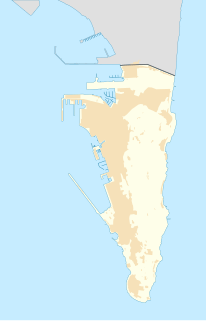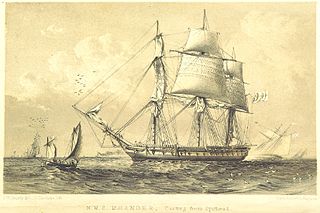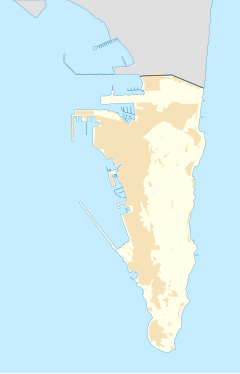
Queen's Park is an urban park in Downtown Toronto, Ontario, Canada. Opened in 1860 by Edward, Prince of Wales, it was named in honour of Queen Victoria. The park is the site of the Ontario Legislative Building, which houses the Legislative Assembly of Ontario. The phrase "Queen's Park" is regularly used as a metonym for the Government of Ontario or the Legislative Assembly of Ontario.

Dulce et decorum est pro patria mori is a line from the Odes (III.2.13) by the Roman lyric poet Horace. The line translates: "It is sweet and fitting to die for the homeland." The Latin word patria (homeland), literally meaning the country of one's fathers or ancestors, is the source of the French word for a country, patrie, and of the English word "patriot".

The siege of Sevastopol lasted from October 1854 until September 1855, during the Crimean War. The allies landed at Eupatoria on 14 September 1854, intending to make a triumphal march to Sevastopol, the capital of the Crimea, with 50,000 men. The 56-kilometre (35 mi) traverse took a year of fighting against the Russians. Major battles along the way were Alma, Balaklava, Inkerman, Tchernaya, Redan, and, finally, Malakoff. During the siege, the allied navy undertook six bombardments of the capital, on 17 October 1854; and on 9 April, 6 June, 17 June, 17 August, and 5 September 1855.

The Guards Crimean War Memorial is a Grade II listed memorial in St James's, London, that commemorates the Allied victory in the Crimean War of 1853–56. It is located on Waterloo Place, at the junction of Regent Street and Pall Mall, approximately one-quarter of the way from the Duke of York Column to Piccadilly Circus.

The Soviet War Memorial is one of several war memorials in Berlin, capital city of Germany, erected by the Soviet Union to commemorate its war dead, particularly the 80,000 soldiers of the Soviet Armed Forces who died during the Battle of Berlin in April and May 1945.

The Polish War Memorial is a war memorial in West London, England in memory of airmen from Poland who served in the Royal Air Force as part of the Polish contribution to World War II. Over 18,000 men and women served in the Polish squadrons of the RAF during the war, and over 2,000 lost their lives. The memorial is located is in South Ruislip in the London Borough of Hillingdon, near RAF Northolt, where seven Polish-manned fighter squadrons were based at different times in the war.

Mowbray Park is a municipal park in the centre of Sunderland, Tyne and Wear, England, located a few hundred yards from the busy thoroughfares of Holmeside and Fawcett Street and bordered by Sunderland Museum and Winter Gardens to the north, Burdon Road to the west, Toward Road to the east and Park Road to the south. The park was voted best in Britain in 2008.

The Trafalgar Cemetery is a cemetery in the British Overseas Territory of Gibraltar. Formerly known as the Southport Ditch Cemetery, it occupies a small area of land just to the south of the city walls, in what had been a defensive ditch during the period of Spanish rule of Gibraltar. Although it is named for the Battle of Trafalgar of 21 October 1805, only two victims of the battle are buried there. The remainder of the interments are mostly of those killed in other sea battles or casualties of the yellow fever epidemics that swept Gibraltar between 1804 and 1814. In addition, tombstones were transferred to the Trafalgar Cemetery from St. Jago's Cemetery and Alameda Gardens.

HMS Maeander was a Seringapatam-class sailing frigate of the British Royal Navy. Her service included the suppression of piracy, the Russian War, and support for the suppression of slavery with the West Africa Squadron. She was wrecked in a gale in 1870.

The Russian Memorial is an obelisk in the churchyard of St John sub Castro in Lewes, the county town of East Sussex, England. It was erected in 1877 at the behest of Alexander II, Emperor of Russia, in memory of 28 Finnish soldiers of the Russian Army of the Crimean War who died while prisoners of war in Lewes between 1854 and 1856. It has been designated by English Heritage as a Grade II listed building.

The American War Memorial is a World War I memorial in the British Overseas Territory of Gibraltar. It was built for the American Battle Monuments Commission in 1933, and incorporated into the main city wall, the Line Wall Curtain. It commemorated the successful alliance of the United States and the United Kingdom in their naval exploits in the vicinity of Gibraltar during the Great War. The monument was inaugurated in 1937. Sixty-one years later, in November 1998, the monument was the site of another unveiling ceremony, that of a bronze plaque which commemorated the World War II Allied invasion of North Africa, Operation Torch. That unveiling ceremony was one of a number of events that weekend whose guests included dignitaries from the United Kingdom and the United States.

Redheugh Gardens War Memorial or Hartlepool War Memorial is a World War I and World War II memorial located in the Headlands of Hartlepool, County Durham, England. It commemorates Hartlepool military servicemen and civilians who lost their lives in both wars – with specific mention of the first British soldiers to have died on British soil during 16 December 1914 Raid on Scarborough, Hartlepool and Whitby of World War I. In 2001 a plaque was unveiled to memorialise 240 men and women who succumbed from 1919 to 1967 during war and conflict.

The North Front Cemetery is a cemetery located in the British Overseas Territory of Gibraltar. Also known as the Gibraltar Cemetery and the Garrison Cemetery, it is the only graveyard still in use in Gibraltar. It is also the only Commonwealth War Graves Commission (CWGC) cemetery in Gibraltar. The two CWGC monuments, the Gibraltar Memorial and the Gibraltar Cross of Sacrifice, are positioned nearby at the junction of Winston Churchill Avenue and Devil's Tower Road.

The Southport Gates are three city gates in the British Overseas Territory of Gibraltar. They are located in the Charles V Wall, one of the 16th century fortifications of Gibraltar. The gates are clustered together, with the South Bastion to the west, and the Trafalgar Cemetery to the east. The first and second Southport Gates were constructed at present day Trafalgar Road in 1552 and 1883, respectively. The third gate, Referendum Gate, is the widest of the three and was constructed in 1967 at Main Street, immediately west of the first two gates. The Southport Gates are listed with the Gibraltar Heritage Trust.

The Gibraltar Cross of Sacrifice is a war memorial in the British Overseas Territory of Gibraltar. It is located west of North Front Cemetery, at the junction of Winston Churchill Avenue and Devil's Tower Road. The Cross of Sacrifice was designed by Sir Reginald Blomfield in 1917, and his monument is found in numerous Commonwealth War Graves Commission cemeteries. The cross in Gibraltar was erected by the Royal Engineers for the commission, and unveiled on Armistice Day 1922. The British Pathé film recorded at the dedication ceremony that day represents the first motion picture made in Gibraltar. The Gibraltar Cross of Sacrifice served as the focus of Remembrance Sunday ceremonies in Gibraltar until 2009, at which time the location was changed to the Gibraltar War Memorial.

Princess Caroline's Battery is an artillery battery in the British Overseas Territory of Gibraltar. It is located at the northern end of the Upper Rock Nature Reserve, at the junction of Willis's Road and Queen's Road. The nearby Princess Anne's Battery is often mistakenly referred to as Princess Caroline's Battery. The latter was built in 1732 and named after Princess Caroline, the daughter of King George II. Princess Caroline's Battery was updated in 1905, and a 6 inch Mark VII gun was mounted above the magazine. Later, the battery was decommissioned and the gun removed. The underground magazine is now home to the Military Heritage Centre, which includes the Memorial Chamber.

Southport War Memorial is in London Square, Lord Street, Southport, Merseyside, England. It consists of an obelisk flanked by two colonnades in the form of Greek temples. Outside the colonnades are memorial gardens, each containing a Pool of Remembrance and fountains. The memorial was designed by the local architects Grayson and Barnish, and the carving was executed by Herbert Tyson Smith. It was unveiled in 1923 by the Earl of Derby. Following the Second World War and subsequent conflicts further inscriptions and names have been added. The memorial is recorded in the National Heritage List for England as a designated Grade II* listed building.

Finchley War Memorial is a World War I monument located in Ballards Lane, North Finchley in the United Kingdom. The Memorial commemorates the 1,000 Finchley residents who died in that war.

Streatham War Memorial is a war memorial to the war dead of the London district of Streatham in the two World Wars. It was unveiled in 1922, and is sited near the northwest corner of Streatham Common.

























